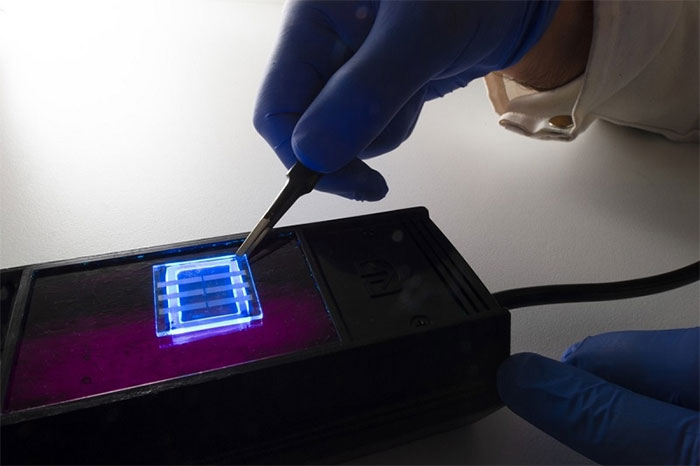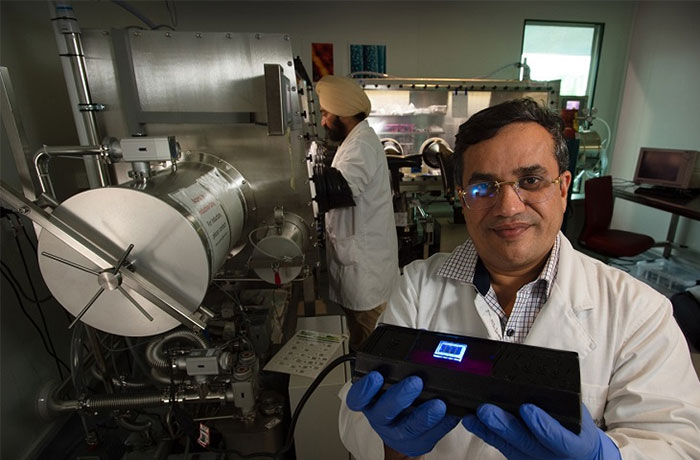Regenerates organic led screens from human hair
Researchers at Queensland University of Technology (QUT) have found a useful source of organic waste, human hair, which can be used to create Oled displays (organic leds).

This organic led device is created by human hair. (Photo: Queensland University of Technology).
In the world, the majority of human hair is cut off in landfills. Therefore, QUT researchers decided to collect this waste material from a local barber and incorporate it into electronics.
Research published in the journal Advanced shows that hair is a good source of carbon and nitrogen, which is very helpful for creating glowing particles. Hair is processed and then burned at 240 ° C, to create a material with carbon and nitrogen in it. The team then turned the material into carbon nanotubes the size of less than 10 nanometers.
The nanodots are then dispersed through a polymer so that they clump together to form what the team calls a 'nano archipelago'. These are the materials used as the active layer in organic led devices.

Researcher Prashant Sonar with Oled device. (Photo: Queensland University of Technology).
When a small voltage passes, the nanodots glow blue. It's not particularly bright, the team said, but it's still useful for small-scale screens, like wearables.
Dr. Prashant Sonar, author of the study, said organic light-emitting devices could be used for a number of indoor applications such as smart packaging. They can also be used when a small light source is needed to signal or in smart median strips. And they can also be used in medical devices because they are non-toxic.
The team said that in the future, animal hair from pet stores or sheep wool could be used in similar devices.
- Give back 'blue' for hair
- The reason dog hair smells bad when it comes to water
- On the human body has many holes?
- Golden hair dyeing technology
- Why do people have to cut their hair and not other animals?
- Discovered the gene that indicated curly hair
- 50 The incredible truth about hair
- Coming soon graphene smartphone screen 'can't break'
- Samsung launches an ultra-thin OLED display
- The reason many people prefer organic food
- Find the mysterious component of hair
- Why silver hair back?
 The US company is about to build a supersonic passenger plane of 6,000km / h
The US company is about to build a supersonic passenger plane of 6,000km / h Japan develops avatar robot as in fiction film
Japan develops avatar robot as in fiction film Australia tested the world's first mango picking robot
Australia tested the world's first mango picking robot America develops technology to separate water from animal waste
America develops technology to separate water from animal waste